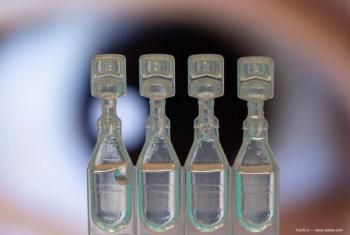
Mechanical epithelial removal favored in lab study
Charleston, SC-Use of a particular computer-driven microkeratome (Amadeus II with EpiBlade, Advanced Medical Optics) results in a better-quality separation of the corneal epithelium compared with an alcohol-assisted technique, according to a laboratory study reported by Luis E. Fernandez de Castro, MD.
The study incorporated clinical and histologic evaluations of the smoothness of the corneal bed and the plane of the cut after separating the epithelium with the two techniques in paired globes from human donors, explained Dr. Fernandez de Castro, research instructor in ophthalmology, Storm Eye Institute, Magill Research Center for Vision Correction, Medical University of South Carolina, Charleston. A single surgeon performed the separations and assessed the flap and bed quality. In addition, the specimens were embedded for evaluation with transmission and scanning electron microscopy.
"The relevance of our study is that the ability to achieve consistently a clean epithelial edge and smooth Bowman's membrane with the [microkeratome] could translate into higher-quality surface ablation procedures as well as faster epithelial regrowth rates compared with an alcohol-assisted technique, scraping, or use of a brush," he said.
Newsletter
Don’t miss out—get Ophthalmology Times updates on the latest clinical advancements and expert interviews, straight to your inbox.














































.png)


